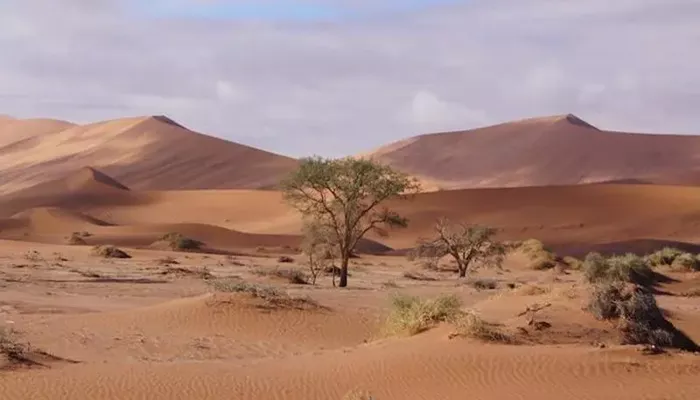A large-scale international study has shed light on how plants adapt to extreme desert climates and how they might respond to emerging threats such as increased aridity, grazing pressure, and desertification.
A team of 120 scientists from 27 countries conducted this research, resulting in findings recently published in the journal Nature. The article, titled “Unforeseen Plant Phenotypic Diversity in a Dry and Grazed World,” reveals surprising new insights into plant diversity in drylands.
Drylands, characterized by very limited water with average annual rainfall ranging from 150 to 250 millimeters, include ecosystems such as Mediterranean landscapes, steppes, savannahs, and deserts. These regions cover 45% of Earth’s land area and support a third of the global population.
Despite the critical role drylands play in the livelihoods of approximately two billion people, research on how plant diversity adapts to these harsh climates has been limited. Over the past eight years, a research team, including Prof. Thulani Makhalanyani from Stellenbosch University, collected plant samples from hundreds of dryland plots across six continents. This extensive effort resulted in the analysis of over 1,300 sets of observations from more than 300 plant species, marking a significant achievement in the study of plant adaptation.
The researchers compiled 1,347 comprehensive trait observations, focusing on the plant elementome—the variety of chemical and trace elements like nitrogen, phosphorus, calcium, magnesium, and zinc found in plants. This extensive dataset included over 130,000 individual plant trait measurements.
Their findings revealed that plant species in arid zones employ a wide range of adaptation strategies, with trait diversity increasing as aridity intensifies. Specifically, plant trait diversity rose by 88.1% in areas with higher aridity.
According to an international media release on EurekAlert, the isolation of plants in arid regions, a phenomenon termed “plant loneliness syndrome,” appears to reduce competition among species. This isolation allows plants to develop a diverse array of forms and functions, leading to a level of diversity that is double that found in more temperate regions. This diversity may also reflect the complex evolutionary history of plants dating back to their initial colonization of terrestrial habitats over 500 million years ago.
As these important ecosystems face threats from rising aridity, increased grazing, and desertification, understanding how plants respond to these pressures is crucial for predicting future changes in biodiversity and ecosystem function.
Prof. Makhalanyane expressed enthusiasm about the study’s results: “This project has provided remarkable insights into functional diversity in understudied desert regions, including some on our own continent.”


